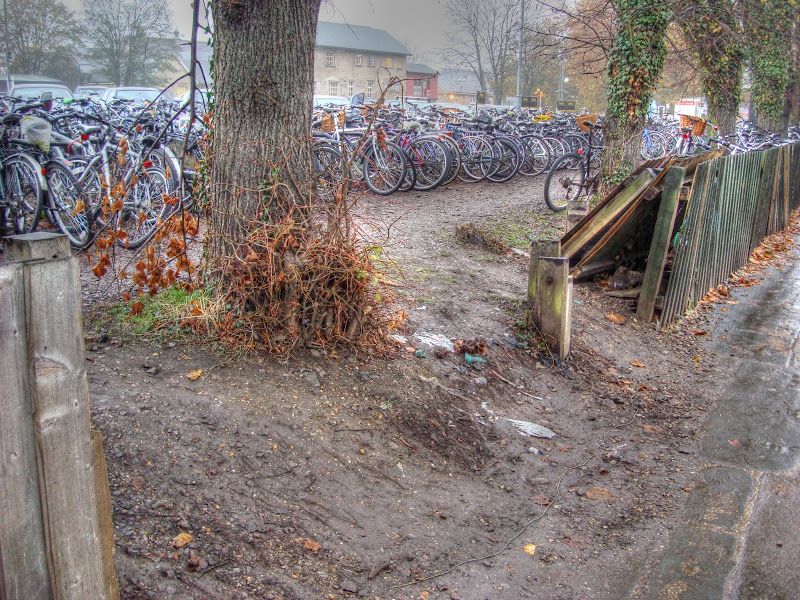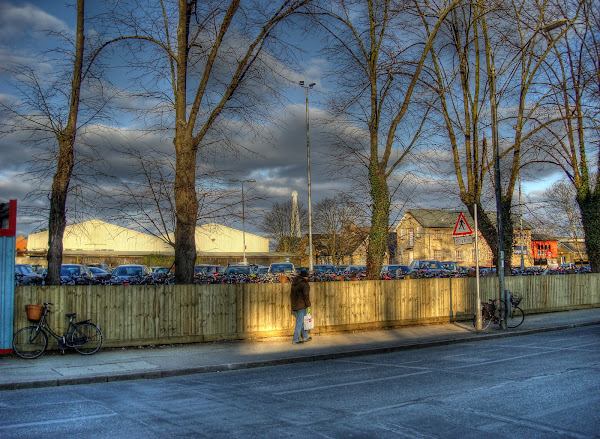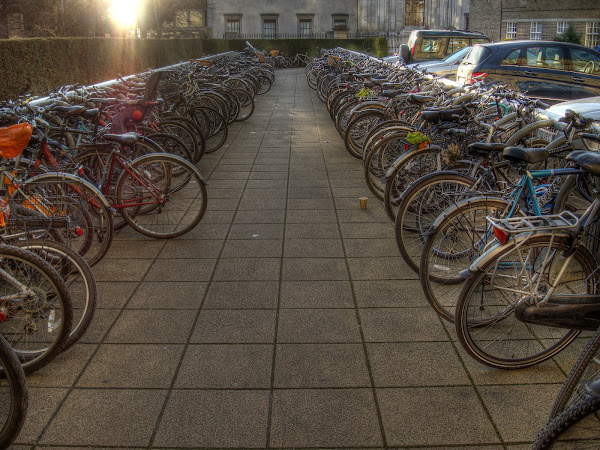Thursday, 2nd February 2012: As might be expected the Times cycling initiative “Cities fit for Cycling” has created quite a stir, although not all that stir can be seen on the other side of the newspaper’s paywall. I did buy the newspaper though and there were the predictable letters calling for cycle training and insurance and taxation and registration.
The Cambridge News has also picked up the message, in part I think, because Mary Bowers the Times journalist fighting for her life after being knocked of her bicycle by a lorry was both a Cambridge Graduate and had undertaken work experience at the Cambridge News.
As it happens the latest “Reported Road Casualties in Great Britain:Quarterly Provisional Estimates Q3 2011” (pdf) has been published. Two things stand out in that document, whilst pedestrian, motorcycle and car user KSI casualties (reported to the Police) fell by 2, 1 and 7% for the year ending September 2010 the number of KSI casualties for pedal cyclists rose by 8% for the same period. The other thing that appals me is that the appalling increase in cycle KSI casualties does not appear in the key findings on the front page of the document. (Note KSI – Killed or seriously injured).
Have we become such a nation of spin that even our statisticians practice ignore inconvenient key findings if they are negative?
Let’s contrast this with the headline for the same information on road.cc – “DfT statistics show alarming rise in the number of cyclists killed or seriously injured on Britain’s roads”. Admittedly you would expect road.cc to pick up on this – but it is alarming, especially in the face of the overall strong downward trend. Check out the graph. The quote from the IAM calls for “…changes to road layouts, more cycle training and promoting better awareness among drivers”.
Just to remind ourselves what information is there about the causes of cycle accidents? Here is a Guardian article from December 2009 – “Risky cycling rarely to blame for bike accidents”. The same issue is picked up by road.cc – “Report in to DfT casualty stats says cyclists not to blame in 93 per cent of cases”. The free DfT report is available here – but you will need to register.
I did find an interesting study by NHS Bristol into the main causes of cyclists’ non-collision accidents. Slipping on ice was mentioned by 26%, slipping on wet roads by 8%. Here is link to the survey. In my experience the main problems are that cycle paths do not get de-iced, often cycle routes have wooden bridges which are very slippery in the wet and manholes covers are the scourge of cyclist and motorcyclist alike.
While I am at it let’s remind ourselves just how many cyclists jump red lights. A study performed for Transport for London – “Proportion of Cyclists Who Violate Red Lights in London” summarise their findings as an average of 16% violated the red lights – now there is variation and in my book that is still too many – but it is only a small minority. I can’t find a similar study for motor vehicles – but Police caught 95 in Jersey in 2011.
Level Crossing Warning – Cherry Hinton
And finally – well finally for the statistics – here is an interesting article on Advanced stop zones and the (lack) of enforcement. What are these zones for, well cyclists safety, what cyclist hasn’t seen countless examples of motor vehicles stopping unnecessarily in them.
And before I forget – “Pollution from America causes Europe to lose a million tonnes of wheat a year” – why, well man-made pollution from coal fired power stations and cars apparently.
So what is the problem? Well I think that many motorists find themselves under siege. Undoubtedly motoring costs are rising at the moment (Cost of motoring increases at three times rate if inflation). Congestion is viewed as a problem by many motorists although average speeds have improved slightly. The trouble is commuting has become part of our culture and something we are sensitive to. A TUC study suggested that Employees spend nearly 200 hours a year travelling to and from work. Apparently UK drivers spends more time in traffic compared with Belgium, Germany, Luxembourg and the Netherlands.
A new weapon on the war against motorists – £12,500 laser speed camera. But it isn’t a war it is about safety.
So motorists will not be happy campers and therefore not very rational when it comes to other road users. They fail to recognise that each cyclist is one less car on the road and instead believe that cyclists should feel the pain they do. Which is why they call for registration and training and insurance. However rationally a bicycle does very little damage to the road, much less than exempt cars. A bicycle causes far less damage or injury than a car in the event of an accident. A bicycle improves the cyclists’ health rather than compromises it like driving. So for many motorists it is easier to focus on cyclists as the problem rather than accept the short-comings of their own choice of transport. It helps submerge the guilt as well.
I should point out that I am not anti-car, I have a 4x4 so am hardly greener than green, however I am sick of being treated as a second class citizen when on my bicycle. Don’t keep telling me all cyclists are law-breakers. Don’t try to pin the blame on me for the accidents by going on about helmets or training or sticking to the crappy cycle paths. Don’t try to blame me for the road damage and pollution. The data doesn’t support it. If we want to encourage people to cycle it needs to be intrinsically safe. It can be – look at the Netherlands. Let’s face it I don’t have to take a walking test, or wear protective gear on the pavement.
Phew – that’s way too much ranting. Despite the cold yesterday was a lovely sunny day. I had meetings in Cambridge and was able to take a “small” circle route to get to them. I was well wrapped up, but wearing business clothes rather than cycling gear. When it is cold then you really don’t have to worry too much about getting hot and sweaty, the real challenge is the extremities. For short, less than one hour rides then I like my fingers and ears to be well protected.
My route took in The Tins and I went past the Railway Station. Now I naively assumed that the fence had been removed at one end of one of the crappy cycle parking facilities to make it easier for cyclists to get in and out without getting covered in mud. This is what it looked like.
An additional Entrance to the Station Road Cycle park, Cambridge?
Well I was wrong. There is a nice new fence, to protect those poor pedestrians from having to come into contact with muddy cyclists. As you can see already cyclists have been forced to abandon their bicycles because of the poor facilities. cycle parking facilities at Cambridge Railway Station are crappy, crappy, crappy.
And yet loads of cash is going into the area as tall buildings start to hem in the Station. Apart from the fact that the temperature barely got above freezing it was great to be out on my bike. I paid a lot of attention to cycle paths surfaces though – I didn’t want another fall because of ice.
You can tell it is term time – cycle parking is in short supply. My bike is two-thirds of the way along on the right-hand-side. With a yellow glove on the handlebars.
After my meetings I cycled across to Yippee Noodles to meet my family for a meal. My daughter has finished her reading week and is back off to University tomorrow. I off-loaded the stuff I didn’t need for them to take home and apart from a bit of trepidation due to potentially icy paths had a very pleasant ride home. I used my brightest light for ice spotting.
And finally some pictures – Sony World Photography awards shortlist, bullet time photography, freezing scenery and Victoria Pendleton’s new bike.




No comments:
Post a Comment